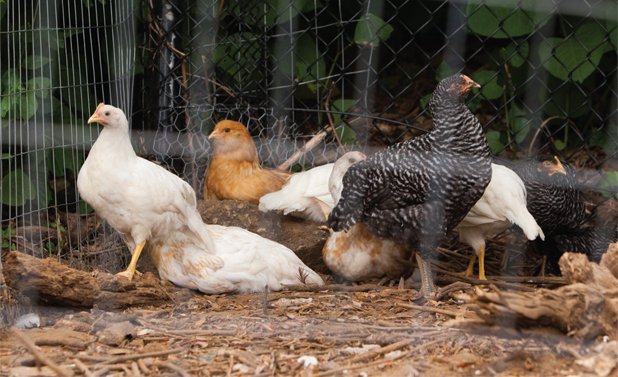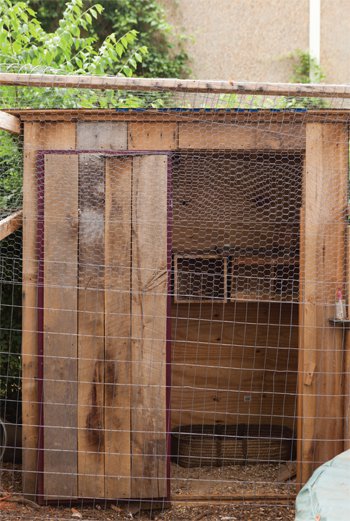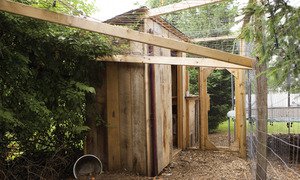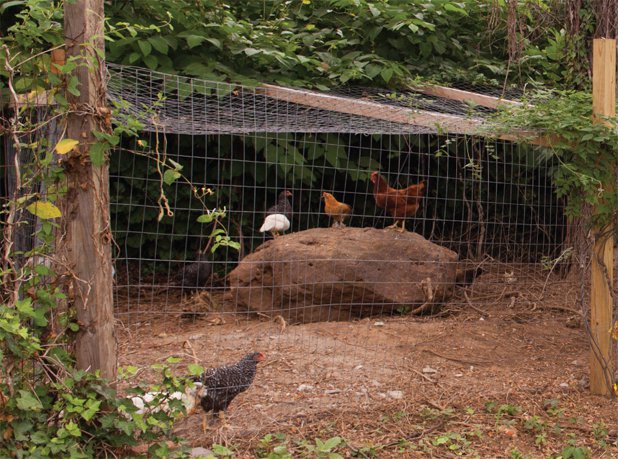Get Started on Your Backyard Hen Farm Today
Photos by Tony Lewis, Jr.
If you've been on the fence about backyard chickens since they became legal within Annapolis last year, we're here to help. While the lure of sustainability (and fresh eggs, of course!) has made backyard chickens a buzz phrase recently, the reality of all that's involved in rearing these birds can seem a bit daunting. Balk (or bock!) no more, though, as we've consulted the leading resources and compiled a list of five things you need to know before getting started.
There are Rules (but not too many)
The ordinance passed by the City of Annapolis last year allows for up to five chickens (hens only) on a property within city limits. Before purchasing the birds, you must obtain a permit from the city by filling out the Department of Neighborhood and Environmental Programs' Backyard Chicken Registry and Approval Form, which contains a section requiring approval from all abutting homeowners.
You can DIY
If you're handy, everything from the feeder to the coop to the run can be made by hand, allowing you to create a truly one-of-a-kind backyard chicken farm. Before getting started, you must receive site approval from the City of Annapolis for your coop. Per the city's ordinance, the coop must have an enclosed run and the proper square footage per bird in both the coop and the run (go to annapolis.gov, and click on “Forms and Permits” at the top of the page to find the Backyard Chicken Registry and Approval Form, which has all the specifications). Words of warning: Be sure anything you build can be locked and is secure on all sides to prevent foxes and other predators from gaining entry.
Inside the coop, nests can be another fun DIY project. Nest boxes (one for each hen) measuring 10-by-10 inches should be placed 24 inches above the ground, with one to two inches of clean, dry nesting material—preferably straw or pine shavings—atop. At times, the hens will prefer to share nesting boxes; but at other times, they will want their own space, so it's best to have a nest for each. The birds should have access to nests at about 19 to 20 weeks, but should be given the opportunity to find them a few weeks prior, as it helps prevent them from developing the habit of laying on the floor. A healthy chicken should produce one egg per day. Artificial light inside the coop is not mandatory, but it will maximize egg production (a 25-watt incandescent bulb will light 40 square feet). A combined 14 hours of natural and artificial light should maintain egg production throughout the year.
If you are building your own feeder, be sure it is designed to avoid waste—it must have a grill to keep chickens from scratching in it and a lip to keep the feed from being spilled out. It also must be the correct height—the back height of the chickens.
Or Not
For those not interested in doing everything themselves, there are plenty of commercial products available at local feed stores and online, including feeders, waterers, and coops. At the very least, you'll need to purchase the chickens. There are several eeds popular for egg laying— White Leghorns for white eggs, and Rhode Island Reds and Buff Orpingtons for own eggs. These eeds can lay up to 200 eggs per year, per hen. You can purchase your chicks or chickens from a hatchery or eeder (the University of Maryland Extension recommends one that participates in the National Poultry Improvement Plan to avoid contagious diseases—visit healthybirds.umd.edu for a list).
If you decide to go with chicks, you'll need to do your research, as they must stay in a ooder with temperatures of 90 to 100 degrees for the first 60 days (you can take them out to play for short intervals, as it's important for them to acclimate to people). The temperature should be decreased by five to seven degrees every week until they have feathers in full (usually by eight weeks old). Once they are larger, they can be moved into the coop.
You can also adopt hens from several local rescue centers— Cheryl's Rescue Ranch in Odenton (240-882-7963) and Poplar Spring Sanctuary in Poolesville (301-428-8128). If adopting, a general rule to keep in mind is eeds with white ear lobes lay white eggs and eeds with red ear lobes lay own eggs.
Regardless of whether you go the chick or chicken route, you must register your birds with the Maryland Department of Agriculture (mda.maryland.gov/animalhealth).
Feeding is the Biggest Cost
About 70 percent of the cost of raising chickens comes from feed. Since mixing ingredients to ensure proper nutrients can be tricky, it's best to stick to high-quality commercial feed— which can be purchased from local feed stores. The chickens' diets can be supplemented with grasses and insects consumed during pasture grazing, and ground oyster shell, calcite, or limestone for extra calcium for eggshell development.
There are High-end Options
Companies like Williams-Sonoma have recently bought into the backyard chicken craze, producing high-end coops (upwards of $1,400), as well as novelty items such as baskets and gift crate sets. Taking the trend to new heights last year, Neiman Marcus unveiled an $100,000 hen mini-farm in its 2012 Christmas Book. The farm included a multilevel dwelling complete with a nesting area, living room, li ary, waterer, feeder, and chandelier, as well as the personal assistance of a hen expert who conducts a ground survey and hand-selects up to 10 hens.
---The Neelys were among the first residents of Annapolis granted approval for their backyard chicken coop---
Resources:
Annapolis.gov: For complete information on the City of Annapolis’ backyard chicken ordinance and permit application (click on “Forms and Permits” at the top of the page to find the Backyard Chicken Registry and Approval Form).
Healthybirds.umd.edu: For more information on raising backyard chicken flocks (click on “Raising Home Flocks” on the left).
Pinterest.com/Whatsupmag: For inspiration for your backyard chicken farm (click on the Chicken and Coops board).




